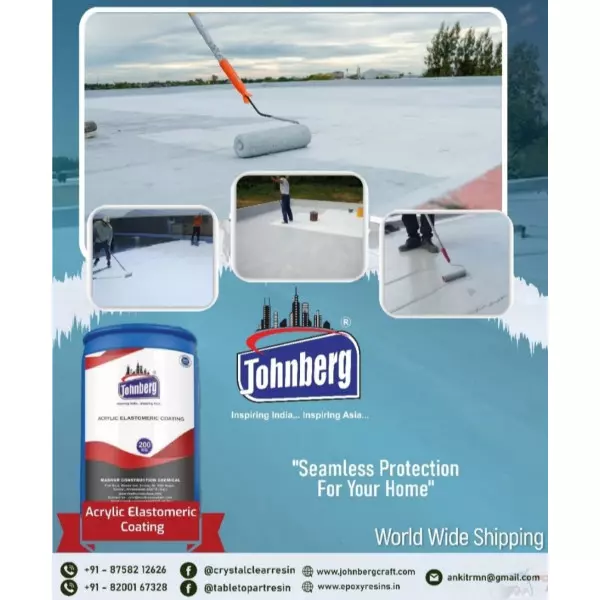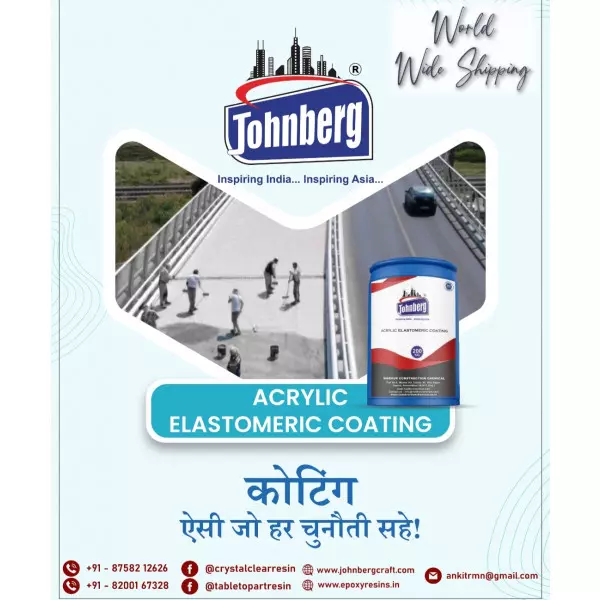- Home
- About Us
- Products
- Resin Furniture
- 3D Epoxy Flooring Service
- Resin Table Top
- Wooden Epoxy Resin Table Top
- Metallic Epoxy Flooring Service
- Conception Chemical Consultants
- Chemical Consultancy For Construction
- Construction Chemical Consultant
- Tile Grout
- Foundation Grout Consultant
- Paver Block Chemical Consultant
- Waterproofing Chemical Consultant
- Epoxy Pigment Consultant
- Heat Reflective Coating
- Water Repellent Coating
- Epoxy Grout
- Chemical Consultant
- Industrial Chemical
- Construction Chemical
- Epoxy Resin
- Epoxy Coating
- Polyester Resin
- Joint Sealants
- Cristal Clear Epoxy Resin And Hardner
- Construction Chemicals
- Polycarboxylate Ether And Liquid
- Solvent Cement
- Tile Protection Sheet
- Water Reducing Superplasticizer
- Epoxy Resin And Hardeners
- Two Component Waterproof Coating
- Epoxy Floor Coatings
- Casting Resin
- Sbr Latex Polymer
- Epoxy Grout Formulations
- Epoxy Resin Tabletops
- Tile Spacers
- Tile Levelling Spacers
- Industrial Night Vision Epoxy Grout
- Sbr Latex
- Johnberg Marble Polishing Liquid
- Acrylic Elastomeric Coating
- Weber Tile Adhesives
- Decorative Arts
- Resinic Crafts
- PU Flexible Tile Adhesive
- Resin Pressed Flowers
- Dry Pressed Flower
- Epoxy Putty
- Resin Furniture
- Services
- Updates
- Gallery
- Contact Us
Acrylic Elastomeric Coating In Telangana
Details of Acrylic Elastomeric Coating
Acrylic elastomeric coating is a type of coating system made from a blend of acrylic polymers and elastomeric resins. It is designed to provide superior protection and waterproofing for building surfaces, especially roofs and exterior walls. Here's a breakdown of its main features and benefits:
Composition: The coating is composed primarily of acrylic resins and elastomeric polymers. The acrylic gives the coating its durability, while the elastomeric nature allows for flexibility and expansion.
Elasticity: One of the key characteristics of elastomeric coatings is their ability to stretch without breaking. This flexibility allows the coating to move with the substrate (e.g., concrete, masonry, or metal) and accommodate temperature fluctuations or structural movement.
Waterproofing: Acrylic elastomeric coatings are highly effective in preventing water penetration. They form a seamless, waterproof membrane that helps protect surfaces from water damage.
UV Resistance: These coatings are resistant to ultraviolet (UV) radiation, which helps prevent degradation due to sun exposure. This UV resistance contributes to the long lifespan of the coating.
Durability: Acrylic elastomeric coatings are known for their long-lasting performance. They can withstand harsh weather conditions, including rain, wind, and intense sunlight, making them ideal for outdoor applications.
Breathability: Despite being waterproof, these coatings allow moisture vapor to escape from the surface beneath. This is important for preventing the buildup of moisture inside walls or roofs, which could lead to mold or mildew growth.
Thermal Insulation: Acrylic elastomeric coatings can also provide some degree of thermal insulation. By reflecting UV rays, they can reduce the heat absorption of buildings, which helps maintain cooler indoor temperatures.
Application: It is typically applied using brushes, rollers, or spray equipment. It can be used on a variety of surfaces, including concrete, stucco, metal, and masonry.
Appearance: The coating can be applied in a variety of colors and finishes, allowing for both aesthetic appeal and functional performance.
Maintenance: The coating requires minimal maintenance once applied. However, periodic inspection and cleaning are recommended to ensure its continued effectiveness.
Uses: Acrylic elastomeric coatings are commonly used for:
Roofs (flat, pitched, or sloped)
Exterior walls of buildings
Concrete surfaces
Stucco and masonry surfaces
Overall, acrylic elastomeric coatings offer a combination of flexibility, durability, and waterproofing, making them an excellent choice for a variety of building protection applications.
Offered Product
Acrylic Elastomeric Coating
Packaging Size5,10,20,50,200 KgPackaging TypePlastic ContainerBrandJohnbergColorWhiteShelf Life12 MonthVolume Solid Ratio56%FeaturesExcellent ElasticityUsage/ApplicationWaterproofingCountry Of OriginMade In IndiaElastomeric Coating Having Excellent Binding Properties, Uv Resistant, Highly Abrasion Resistance, Washables, No Dirt Pickup, Long Life, Durable. More Elongation... Read moreAcrylic Elastomeric Coating In Patna
Acrylic Elastomeric Coating Is A High-performance, Flexible, And Durable Protective Coating Widely Used In Construction And Industrial Applications—especially For Roofing, Walls, And Other Exterior Surfaces. Here's A Detailed Breakdown:What Is Acrylic Elastomeric Coating?Acrylic Elastomeric Coating Is A Water-based Or Solvent-based Coating Made From 100% Acrylic Polymers. It Forms A Rubber-like, Seamless Membrane That Stretches And Recovers As The Surface Expands Or Contracts Due To Te Continue
Acrylic Elastomeric Coating In Madurai
Acrylic Coating Is A Type Of Protective Finish Made From Acrylic Polymer Resins. It's Widely Used Across Industries—construction, Automotive, And Manufacturing—for Its Excellent Weather Resistance, UV Stability, And Aesthetic Appeal.Key Properties Of Acrylic CoatingsProperty DescriptionBase Water-based Or Solvent-based Acrylic PolymersAppearance Clear Or Pigmented, With Glossy, Semi-gloss, Or Matte FinishesDrying Time Fast-drying; Typically Touch-dry In 30 Minutes To A Few Continue
Acrylic Elastomeric Coating Service In Vijayawada
Acrylic Elastomeric Coating Is A Flexible And Durable Water-based Coating Made From Acrylic Polymers. It Is Designed To Protect Surfaces From Weathering, UV Radiation, And Moisture. This Coating Expands And Contracts With Surface Movement, Helping To Prevent Cracking And Peeling. It Is Commonly Used On Roofs, Walls, And Other Exterior Surfaces To Provide A Long-lasting Protective Barrier. The Coating Is Typically White Or Light-colored To Reflect Sunlight And Reduce Heat Absorption. It Is Also R Continue




